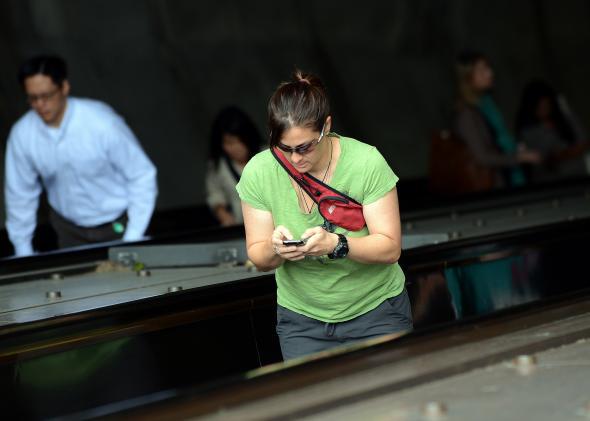This story originally appeared in Inc.
Advancements of mobile technology has ushered in the ability to stay constantly connected to work—for better or for worse.
According to research firm Gallup, 96 percent of all full-time U.S. workers have access to a computer, smartphone, or tablet. Two-thirds of American workers say the amount of work they accomplish outside of work hours has increased “a little” to “a lot” due to mobile technology over the last decade.
Jim Harter, an executive in Gallup’s workplace management practice, writes in the Harvard Business Review about the debate over banning email after the end of the workday for the sake of employees’ well-being. He says Gallup has found some interesting data that could make leaders rethink their position on such bans.
“We found that just over a third of full-time workers say they frequently check email outside normal working hours—and those who do are 17 percent more likely to report better overall lives compared with those who say they never check email outside work,” Harter writes in HBR. The results still hold after controlling for income, age, gender, and education differences. “Similarly, those who spend seven or more hours checking their email outside work during a typical week are more likely to rate their overall lives highly than those who report zero hours of this activity.”
On the other hand, half of workers who check email frequently outside of work are also more likely to report having “a lot of stress yesterday” compared with just one-third of those workers who never check their email remotely.
But is this enough evidence on which to base an after-hours email policy? Harter says you first have to find out whether or not your employees are engaged with their work.
“Problems arise when companies make such policy decisions without considering whether their employees are engaged. If we assume work can be engaging and rewarding, rather than a necessary burden, our assumptions about people and policy become quite different,” he writes. “Gallup’s research has found that high levels of engagement are more important than specific well-being policies.”
Gallup interviewed thousands of U.S. workers and identified three types: those who are engaged, not engaged, and actively disengaged. According to the firm’s data, 30 percent of U.S. workers are engaged, or enthusiastically involved with their work and organization. A whopping 52 percent of U.S. workers are not engaged, which means they show up to work and do the bare minimum. Finally, 18 percent of employees are actively disengaged, meaning they are working against their own organization.
Harter says stress levels correlate with the different levels of engagement more than they do with email policies.
“Daily stress is significantly lower for engaged workers and higher for actively disengaged workers, regardless of whether their employer expects them to check email during nonwork hours or not,” he writes. “And it is the vast swath of ‘not engaged’ or ‘indifferent’ workers who are most influenced by policy decisions of this nature. Among the ‘not engaged’ workers who say their employer expects them to check email outside normal working hours, 54 percent report a lot of stress the previous day.”
So before you assume checking email is detrimental to your employees’ mental health, you should make sure you can do everything you can to increase their levels of engagement.
See also: Science Explains Exactly How Your Phone Is Ruining Your Relationships
